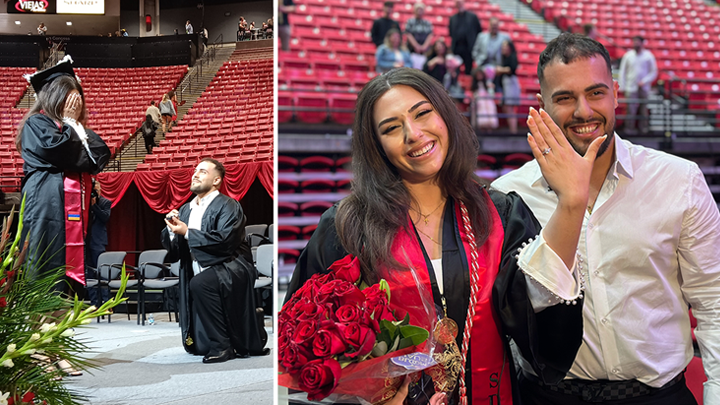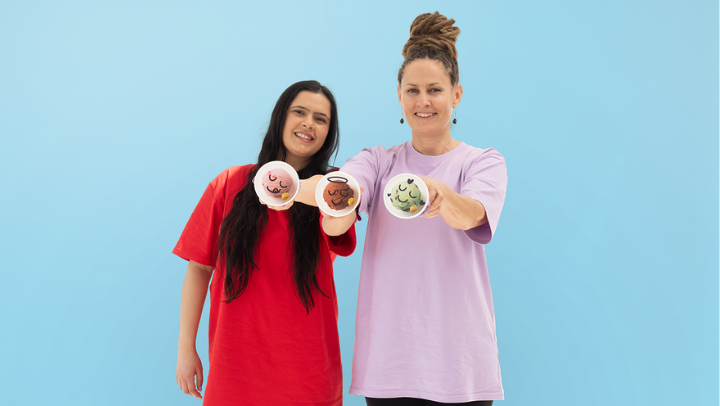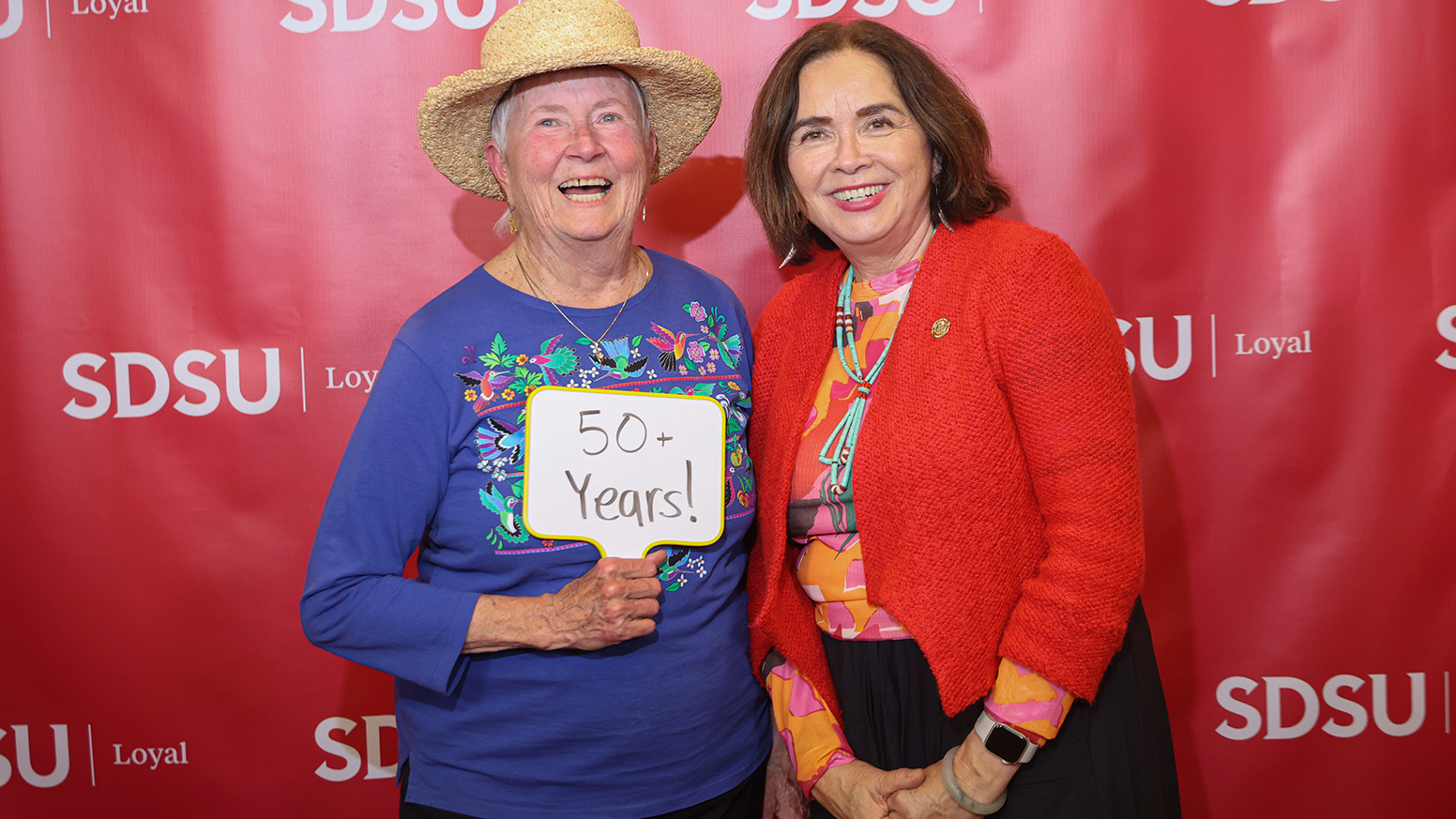Love across the lands: SDSU cultural experts share how love is celebrated outside of Valentine’s Day
Some cultures celebrate Valentine’s Day with a twist, and others have holidays dedicated to love that are uniquely their own.

It’s Valentine’s Day and love is in the air on the campus of San Diego State University. Teddy bears are clutched under arms where laptops and textbooks are usually held, and skateboard and scooter riders are toting balloons and bouquets.
With a campus in the Imperial Valley, a center in Oaxaca, Mexico and a program in the Republic of Georgia, and as both a federally recognized Hispanic-Serving and an Asian American Native American Pacific Islander-Serving Institution, SDSU has a student body that touches several corners of the earth and it would be silly to assume every show of affection exchanged within our campus community follows the American Valentine’s Day blueprint of flowers, cards and candy.
We enlisted the help of a few faculty cultural experts to see how love is celebrated and displayed in different parts of the world.
Like many holidays celebrated in the U.S., today’s connected age is helping Valentine’s Day spread to nations that don’t traditionally recognize the Feb. 14 holiday. Instead, many have entirely different days of the year dedicated to love and partnership.
In China, for example, couples celebrate Lovers’ Day on the seventh day of the seventh month of the Lunar Year, according to Lilly Cheng, an SDSU speech, language, and hearing sciences professor and founding director of the Chinese Cultural Center.
The holiday originates from the story of the mythical Jade Emperor who ruled heaven. He had a daughter, a princess and weaver who created the clouds, rainbows and other beautiful things, who descended to earth and fell in love with a poor shepherd boy. The emperor soon found out about his daughter’s relationship on earth and created the Milky Way, casting the two to separate sides of the galaxy.
“However, he was slightly benevolent,” Cheng explained. “He would allow the lovers to meet once a year. On the seventh day of the seventh month, beautiful little magpies (a bird species) would form a bridge so the lovers could meet.”
With this story in mind, it’s common for couples celebrating Lovers’ Day to seek out a bridge to share a romantic moment, and to secure a lock on the bridge as a symbol of unbreakable love. They might also find a place in nature where birds or butterflies are present: magpies are recognized as deliverers of good news, and butterflies are seen as lovers themselves.
And, yes, much like Valentine’s Day, a “lover” would be in deep water if they forgot about the holiday or presented underwhelming gifts to their partner, Cheng said.
There’s also a food element to Lovers’ Day, because nothing works up an appetite quite like romance.
“Another thing we do is we make noodles. Long, long noodles showing the love is going to last forever,” Cheng said. “The longer the noodle, the more romantic.”
Like on Valentine’s Day, red roses or fancier gifts of jewelry are common on Lovers’ Day, but a staple of the holiday is Chinese sweet cake made from sweet rice, according to Cheng.
Russia and nations of the former Soviet Union are examples of countries that celebrate love outside of Valentine’s Day, but the festivities are reserved for a day many in the U.S. are familiar with: International Women’s Day on March 8.
Zamira Abman is a historian of the Soviet Union and Russia with a focus on the Muslim majority periphery of Central Asia, and she also directs SDSU’s Comparative International Studies Program. She was raised in Tajikistan to Uzbek parents, completed her undergraduate degree in Kyrgyzstan and speaks Russian, Farsi and some Uzbek.
“Everything around love falls on March 8, International Women’s Day. That’s the biggest holiday where women get a lot of love,” Abman said. “It’s as close as we get to Valentine’s Day where women are at the center.”
The lore surrounding International Women’s Day in Central Asia traces back to the Bolshevik Revolution in 1917, according to Abman. Chocolates and flowers are common (red tulips rather than roses), but often times gifts on Women’s Day are inspired by the region’s utilitarian DNA. It wouldn’t be uncommon, or disrespectful, for a man to gift his wife pots and pans or household items.
“I think men probably think, ‘Let me make her life easier and get her things she uses a lot,’” Abman said. “The kitchen is primarily the women’s sphere in that part of the world.”
And while International Women’s Day traditions in Central Asia are largely inspired by Russian customs, there is also a Persian influence on romance in parts of the region that speak Farsi.
One popular story that inspires modern romance is that of Layla and Majnun from the poetry of Jala al-Din Muḥammad Rumi, an Islamic scholar and Sufi mystic of the 13th century. A king becomes wonderstruck at Majnun’s poems praising the beauty of his girlfriend Layla, so much so that he demands to see Layla with his own eyes. When she arrives before the king, he is confused and disappointed, holding the opinion that Layla’s appearance doesn’t align with Majnun’s descriptions. In response to the king’s disappointment, Layla says something to the effect of, “you are disappointed because you are not seeing me through Majnun’s eyes.”
The story evokes the classic phrase, “beauty is in the eye of the beholder,” and is just one of countless pieces in the region’s rich literary history that is commonly shared by couples in love. That rich history also inspires some amateur poetry exchanged between romantic partners.
Matchmaking is also still a big part of Central Asian culture. Matchmakers are used to take deep dives into the personal and family history of young single people before they are matched together for marriage.
Valentine’s Day isn’t totally cast aside outside of the U.S. Mexico and other Latin American countries celebrate on Feb. 14, but with a more inclusive twist. Dia del Amor y Amistad (Day of love and friendship) is a day couples dedicate to love and romance, but it also leaves the door open for the celebration of platonic friendship.
“It’s always coupled with friendship, and to me, that distinction is important because it decenters romantic love and acknowledges the various ways we share love with other people,” said Roberto Hernandez, SDSU professor of Chicana and Chicano Studies. “It helps offset some of those social pressures that make one feel as if they’re lacking if they don’t have a romantic partner to share Valentine’s Day with.”
Latin American politicians have also used the holiday as a chance to extend an olive branch to foreign or political opponents, allowing the sides to acknowledge each other positively, at least for a day.
Celebrating friendship alongside love and romance doesn’t let Hernandez or anyone else off the hook from showing affection to their partner on Dia del Amor y Amistad. A common romantic gesture would be to hire a mariachi to serenade your partner as you both listen or dance, often in the street or a public place. It’s common for mariachis to roam plazas and city centers in Mexico offering paid performances for couples.
Those same plazas hosted an early form of dating apps, according to Hernandez. For generations who came of age before the internet, it was common for young men and women to spend free time circling the plazas in opposite directions, perusing for eligible bachelors or bachelorettes.
As for romantic gifts, jewelry is big in Mexican and Chicano/Chicana cultures, but pieces made with obsidian or jade might hold a deeper value to some than diamonds or other expensive materials.
“Obsidian has a history in meso-american cultures … and for Chicanos, obsidian and jade can represent a grounding in their Indigenous cultures and traditions whereas diamonds are more associated with individualism and consumerism,” Hernandez explained. “Political identity is a big part of what makes Chicano culture Chicano, and there is a working class sensibility and a pushback to American consumerism. In many ways it’s resistance or opposition to U.S. societal norms ... It’s a representation of richness, not necessarily financially, but in understanding cultural traditions.”
Stories and traditions like these from across the globe are evidence of love’s universal nature. Here are a few ways to say “I love you” to a partner, or friend, this Valentine’s Day.
- Chinese (我愛你): Wo ai ni
- Russian (Я тебя люблю): Ya tebya lyublyu
- Tajik (Ман туро дӯст медорам): Man turo dust medoram
- Uzbek: Men seni sevaman
- Kyrgyz (Мен сени сүйөм): Men seni süyöm
- Kazakh (Мен сені сүйемін): Men seni süyemin
- Turkmen: Men seni söýýärin
- Spanish: Te amo, or te amo mucho
- Nahuatl (of the Aztecs): Nimitztlazotah




